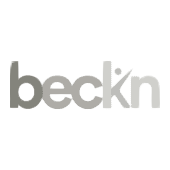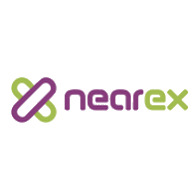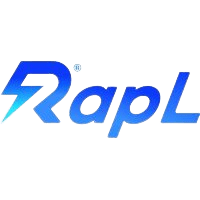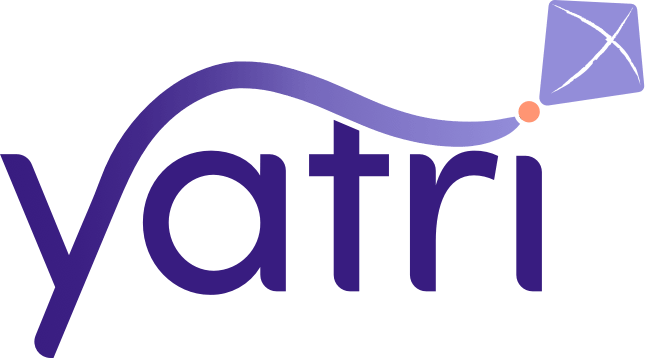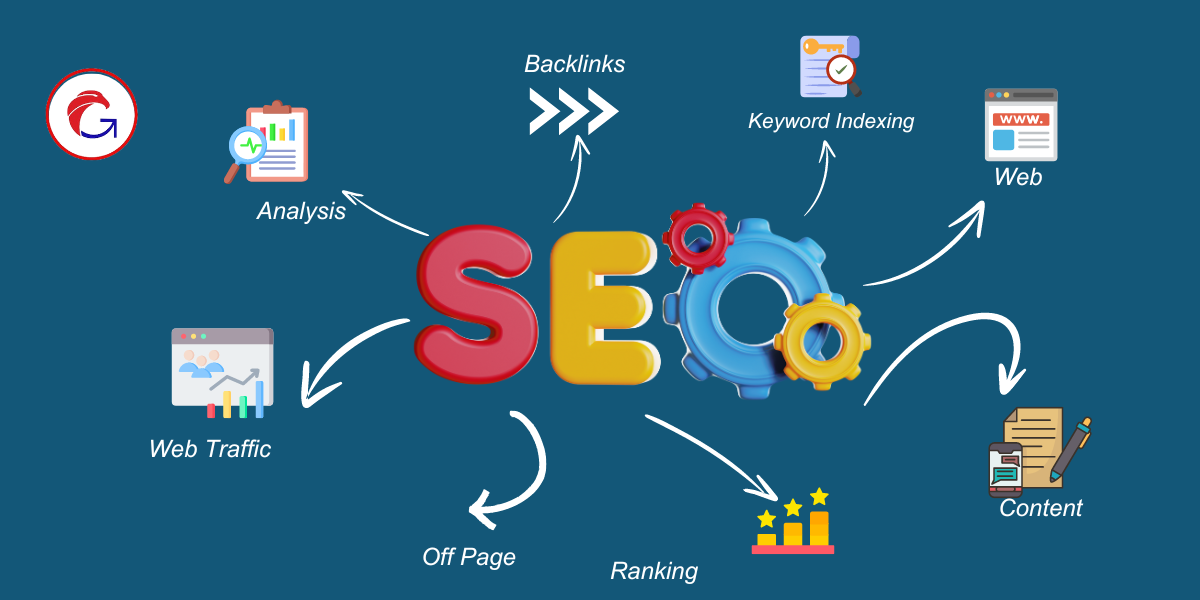
Boost Your Website’s Performance: On-Page SEO Strategies from GrowthFalcons
At GrowthFalcons, we understand the power of On-Page SEO in driving organic traffic and improving search engine rankings. On-Page SEO involves optimizing various elements within your website to enhance its visibility and user experience. This guide provides actionable insights to help you implement effective On-Page SEO strategies and elevate your digital presence.
1. The Importance of On-Page SEO
On-page SEO focuses on optimizing individual web pages to rank higher in search results and attract more relevant traffic. Unlike off-page SEO, which involves external factors, On-Page SEO deals with internal site elements. Key areas include:
- Content Quality
- Title Tags
- Meta Descriptions
- Header Tags
- URL Structure
- Image Optimization
- Internal Linking
2. Crafting Effective Title Tags
Title tags are pivotal for attracting users and search engines alike. They appear as clickable headlines in search results and should effectively convey the content of your page.
- Incorporate Primary Keywords: Place your main keyword near the beginning of the title.
- Keep It Concise: Aim for a length of 50-60 characters to avoid truncation.
- Create Engaging Titles: Write titles that are both informative and appealing to encourage clicks.
Example: “GrowthFalcons’ Guide to Mastering On-Page SEO for Better Rankings”
3. Writing Persuasive Meta Descriptions
Meta descriptions provide a snapshot of your page’s content and can influence click-through rates (CTR). To optimize meta descriptions:
- Use Relevant Keywords: Naturally integrate keywords to improve relevance.
- Be Clear and Compelling: Write a summary that highlights the value of the content.
- Maintain Length: Keep your description between 150-160 characters for full visibility in search results.
Example: “Unlock Growthfalcons’ expert tips on On-Page SEO to boost your website’s ranking and attract targeted traffic. Learn the best practices now!”
4. Structuring Content with Header Tags
Header tags (H1, H2, H3, etc.) organize your content, making it more accessible for both users and search engines. Proper use of header tags enhances readability and SEO.
- Use H1 for the Main Title: Each page should have one H1 tag that defines the main topic.
- Employ H2 and H3 Tags for Subsections: Use H2 for primary sections and H3 for subsections.
- Include Keywords: Integrate relevant keywords naturally within header tags.
Example: For a guide on SEO, use H2 tags like “Key On-Page SEO Techniques” and H3 tags like “Optimizing Title Tags for Better Results.”
5. Optimizing URL Structure
An effective URL structure improves both user experience and SEO. To optimize your URLs:
- Include Keywords: Reflect the page topic in the URL.
- Keep It Short: Maintain brevity while ensuring the URL is descriptive.
- Use Hyphens: Separate words with hyphens instead of underscores or special characters.
Example: “www.growthfalcons.com/on-page-seo-strategies”
6. Enhancing Images for SEO
Images can impact page load times and user engagement. Optimize images to improve site performance and accessibility:
- Use Descriptive File Names: Name images with relevant keywords.
- Add Alt Text: Provide descriptive alt text to enhance accessibility and SEO.
- Optimize File Size: Compress images to reduce load times without sacrificing quality.
Example: For an infographic on SEO, use a file name like “on-page-seo-tips.jpg” and alt text like “Infographic detailing essential on-page SEO tips.”
7. Implementing Internal Linking
Internal linking helps users navigate your site and allows search engines to crawl your pages more effectively. To optimize internal linking:
- Link to Relevant Pages: Connect related content within your site.
- Use Descriptive Anchor Text: Make anchor text informative and relevant to the linked page.
- Avoid Overuse: Implement a natural linking strategy to enhance user experience.
Example: Link phrases such as “Explore more on SEO best practices” to relevant articles on Growthfalcons’ website.
8. Prioritizing Content Quality
High-quality content is the foundation of effective SEO. Content should be informative, engaging, and relevant to your audience.
- Understand User Intent: Tailor content to address the needs and questions of your target audience.
- Update Regularly: Keep your content current to maintain relevance and accuracy.
- Incorporate Multimedia: Use images, videos, and infographics to enhance engagement.
Example: A detailed article on On-Page SEO that offers practical tips, examples, and insights will better serve readers and attract more traffic.
Conclusion
On-Page SEO is essential for optimizing your website’s performance and boosting its search engine rankings. By focusing on key elements such as title tags, meta descriptions, header tags, URL structure, image optimization, internal linking, and content quality, you can enhance your site’s visibility and drive more organic traffic. Implement these strategies with Growthfalcons’ expert insights to achieve superior SEO results and improve your digital presence.
Comprehensive Guide to Off-Page SEO: Strategies from GrowthFalcons
Off-Page SEO is a vital component of your overall digital marketing strategy. It focuses on actions taken outside of your website to improve its search engine rankings and drive more organic traffic. At GrowthFalcons, we understand the importance of off-page SEO in building your site’s authority and visibility. This guide provides a thorough overview of Off-Page SEO strategies and practices to help you enhance your website’s online presence.
1. Understanding Off-Page SEO
Off-Page SEO involves techniques and activities carried out beyond your website to influence its ranking in search engine results pages (SERPs). Unlike On-Page SEO, which deals with elements within your website, Off-Page SEO focuses on external factors such as backlinks, social signals, and online reputation. Key areas include:
- Link Building
- Social Media Engagement
- Content Marketing
- Online Reputation Management
- Influencer Outreach
- Local SEO
- Social Bookmarking
2. Building High-Quality Backlinks
Backlinks, or inbound links, are a critical factor in Off-Page SEO. They signal to search engines that your content is valuable and authoritative. To build high-quality backlinks:
- Create Valuable Content: Develop content that is useful, engaging, and worth linking to.
- Reach Out to Relevant Sites: Contact authoritative websites and blogs for guest posting or link opportunities.
- Utilize Competitor Analysis: Analyze your competitors’ backlink profiles and identify potential link sources.
- Leverage Broken Link Building: Find broken links on relevant sites and offer your content as a replacement.
Example: Write a comprehensive guide on SEO and reach out to industry blogs to feature your guide with a backlink.
3. Engaging on Social Media
Social media engagement can indirectly influence your SEO by driving traffic and increasing brand awareness. To optimize social media for SEO:
- Share Quality Content: Regularly post valuable content on social media platforms to engage your audience.
- Encourage Social Sharing: Include share buttons on your content to increase its reach.
- Interact with Followers: Respond to comments and messages to build relationships and enhance brand loyalty.
- Track Social Metrics: Monitor social media analytics to understand what content performs best.
Example: Share your latest blog post on LinkedIn and Twitter to drive traffic and encourage followers to engage and share.
4. Leveraging Content Marketing
Content marketing plays a significant role in Off-Page SEO by attracting and retaining your target audience. Effective content marketing strategies include:
- Create Shareable Content: Produce content that is informative, entertaining, or visually appealing to encourage sharing.
- Promote Your Content: Use various channels like email newsletters, social media, and forums to distribute your content.
- Guest Blogging: Write guest posts for reputable sites in your industry to reach a broader audience and gain backlinks.
Example: Develop an infographic on industry trends and promote it through email marketing and social media.
5. Managing Your Online Reputation
Your online reputation impacts your SEO and overall brand perception. To manage your reputation:
- Monitor Brand Mentions: Use tools to track mentions of your brand across the web and respond to reviews and comments.
- Address Negative Feedback: Resolve negative reviews or comments professionally to maintain a positive brand image.
- Encourage Positive Reviews: Ask satisfied customers to leave positive reviews on review sites and social media.
Example: Use a tool like Google Alerts to monitor mentions of your brand and address any negative feedback promptly.
6. Conducting Influencer Outreach
Influencer outreach involves collaborating with industry influencers to promote your content and gain exposure. To effectively work with influencers:
- Identify Relevant Influencers: Look for influencers who align with your brand and have a substantial following in your industry.
- Offer Value: Provide influencers with valuable content or exclusive offers to encourage them to promote your brand.
- Build Relationships: Foster long-term relationships with influencers for sustained impact.
Example: Partner with an industry expert to co-create content or conduct a webinar, leveraging their audience to expand your reach.
7. Enhancing Local SEO
Local SEO helps improve your visibility in local search results and attracts local customers. To optimize for local SEO:
- Create a Google My Business Profile: Set up and optimize your Google My Business listing with accurate information.
- Encourage Local Reviews: Ask local customers to leave reviews on Google and other local review sites.
- Use Local Keywords: Incorporate location-specific keywords in your content and meta tags.
Example: Optimize your local business listing with details about your services and location, and encourage satisfied customers to leave positive reviews.
8. Utilizing Social Bookmarking
Social bookmarking involves submitting your content to bookmarking sites to increase visibility and drive traffic. Effective social bookmarking strategies include:
- Submit to Relevant Sites: Choose bookmarking sites that are relevant to your industry or niche.
- Use Descriptive Tags: Add relevant tags to help users find your content easily.
- Engage with the Community: Participate in discussions and provide value to build credibility and attract more attention to your content.
Example: Submit your blog posts to platforms like Reddit or StumbleUpon with descriptive tags to increase visibility and drive traffic.
Conclusion
Off-Page SEO is essential for enhancing your website’s authority, visibility, and overall search engine rankings. By focusing on strategies such as link building, social media engagement, content marketing, online reputation management, influencer outreach, local SEO, and social bookmarking, you can effectively boost your site’s performance and attract more organic traffic. Implement these GrowthFalcons-approved strategies to optimize your Off-Page SEO and elevate your digital presence.
Adopt these techniques to strengthen your Off-Page SEO efforts and achieve greater success in your digital marketing initiatives.
